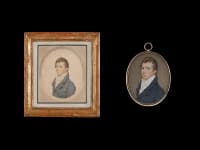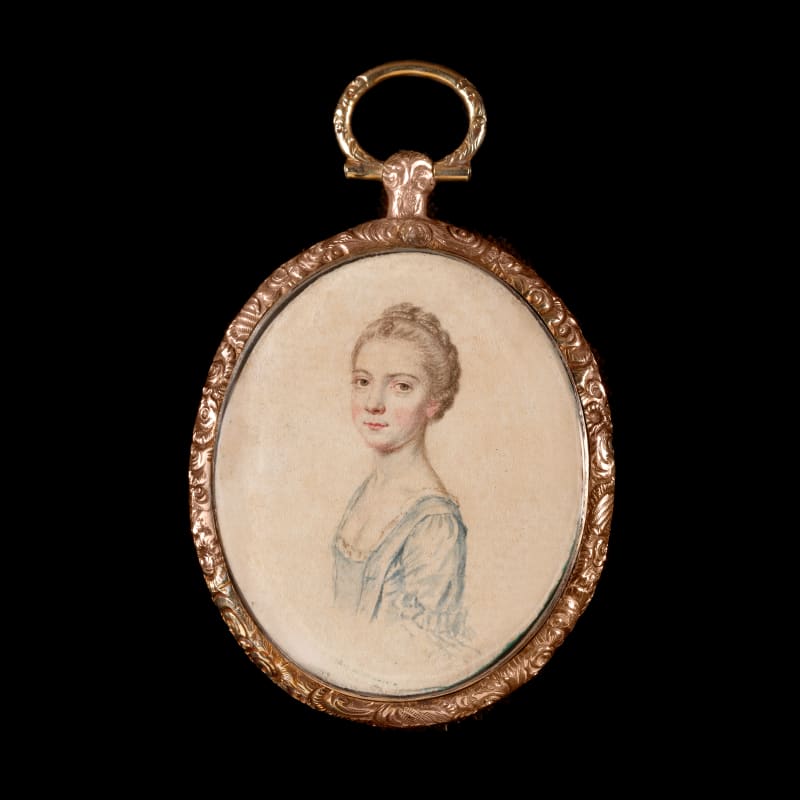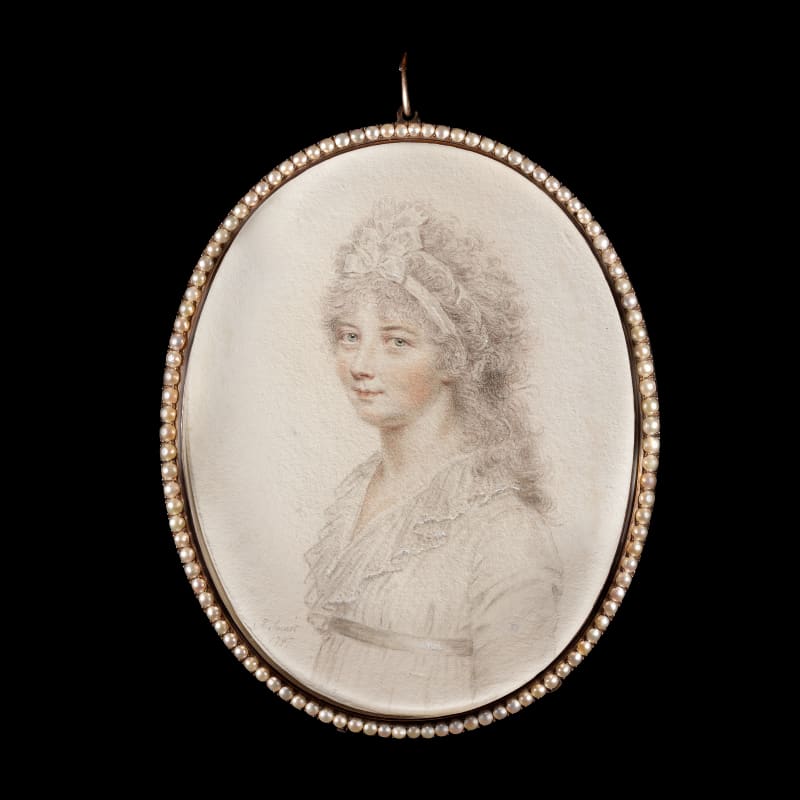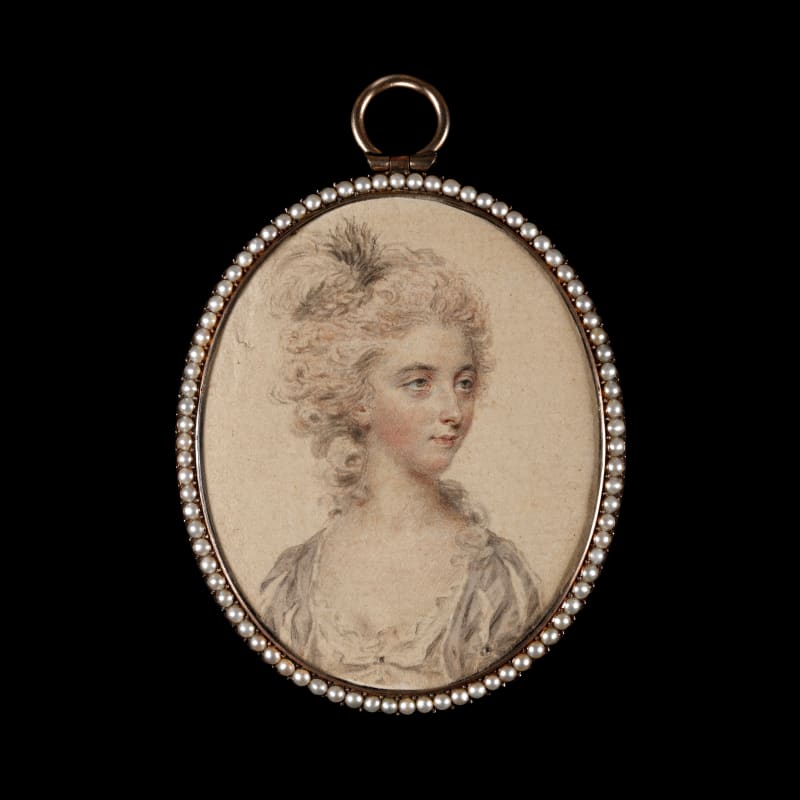Painted three months before the artist’s death, this work on paper and accompanying miniature are testament to Smart’s enduring skill as an artist and an insight into his later working practice. Although the miniature has remained in the Finch-Hatton family since it was painted in 1811, the certain identity of the sitter has been lost. The sitter is possibly the Rev. Daniel Heneage Finch-Hatton (1795-1866), the youngest son of George Finch-Hatton and Elizabeth (née Murray), who would have been sixteen or seventeen at the time of the commission. He became chaplain to Queen Victoria. Another proposed sitter would be his older brother, George William, (later tenth earl of Winchilsea and fifth earl of Nottingham, 1791-1858), but his youthful appearance would suggest that the sitter’s age be lower than the twenty years that George would have been in 1811.
Although no portraits of the Finch-Hatton family by Smart can be traced, he certainly painted the Murray family, including David Murray,...
Painted three months before the artist’s death, this work on paper and accompanying miniature are testament to Smart’s enduring skill as an artist and an insight into his later working practice. Although the miniature has remained in the Finch-Hatton family since it was painted in 1811, the certain identity of the sitter has been lost. The sitter is possibly the Rev. Daniel Heneage Finch-Hatton (1795-1866), the youngest son of George Finch-Hatton and Elizabeth (née Murray), who would have been sixteen or seventeen at the time of the commission. He became chaplain to Queen Victoria. Another proposed sitter would be his older brother, George William, (later tenth earl of Winchilsea and fifth earl of Nottingham, 1791-1858), but his youthful appearance would suggest that the sitter’s age be lower than the twenty years that George would have been in 1811.
Although no portraits of the Finch-Hatton family by Smart can be traced, he certainly painted the Murray family, including David Murray, 2nd Earl Mansfield, 7th Viscount of Stormont, whose daughter Elizabeth married into the Finch-Hattons. Elizabeth, who was brought up at Kenwood House, Hampstead, London, married, in 1785, George Finch-Hatton. Noted to be very much a love-match, the couple had seven children.
The exact purpose of the work on paper remains unclear; it may have been a preparatory sketch, however the highly finished execution, strong colours and signature on the front of the drawing suggests that it was likely a finished work in its own right. Both works were obtained by the sitter’s family and have remained together since they were executed.
Smart’s work ethic was legendary, with his early practice showing a commitment to painting the most intricate details in both his sitter’s clothing and faces. Such slavish devotion to this painting method meant that Smart first sketched his sitter’s portraits on paper before transferring the image to ivory, following colour notes made on the reverse of the original sketch. This process must have taken much longer than the execution of the miniatures of his contemporaries, who painted directly onto the ivory, some boasting the speed of the process. By the time the present portrait was painted, Smart had been working for approximately fifty years as a miniaturist, spending a decade in India between 1785-1795. By 1811, he was living in fashionable Fitzrovia, close to Soho where he was born. His obituary stated that he died after a short illness, on 1 May 1811; 'In his 70th year, after an illness of only nine days, John Smart, Esq., of Russell Place, Fitzroy Square, miniature painter. To most philanthropic and hospitable principles, he added great eminence as an artist; his surprising likenesses in miniature being justly admired in his native country and the East Indies, where he practised for some years with great and deserved reputation.'[1]
[1] The Gentleman's Magazine, 1811, LXXXI, Part I, p. 599.









